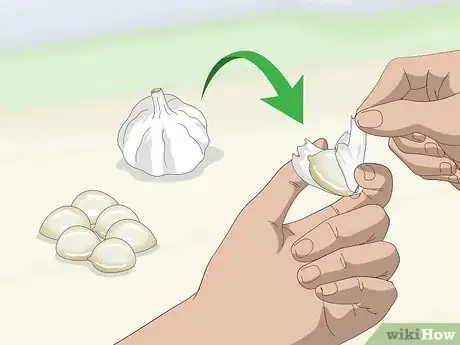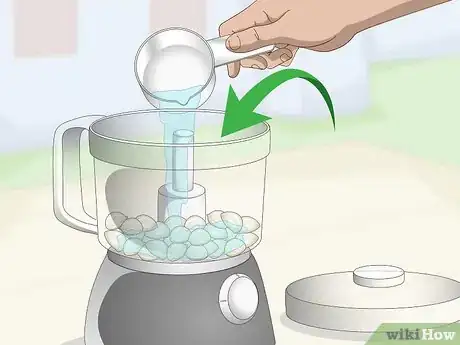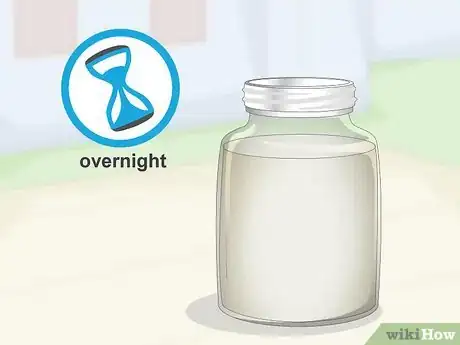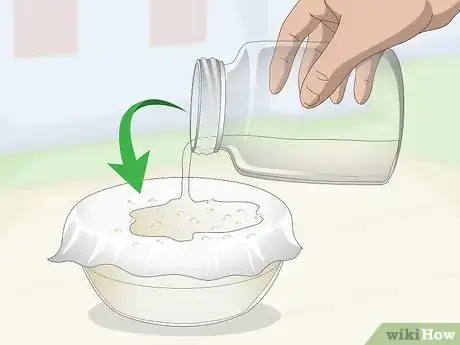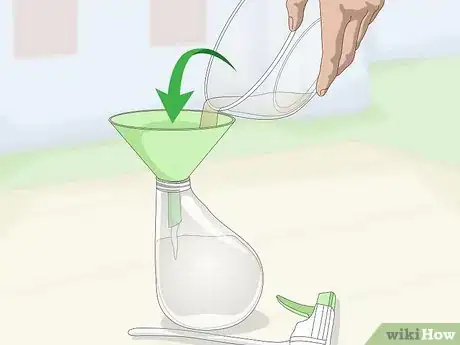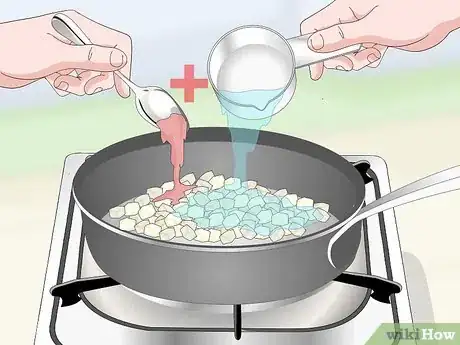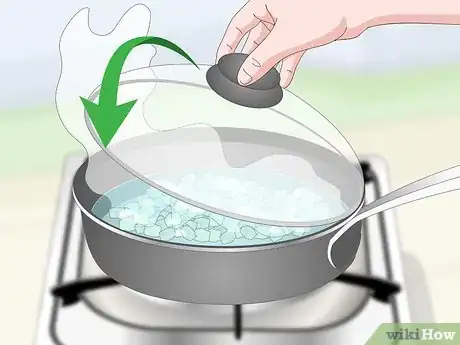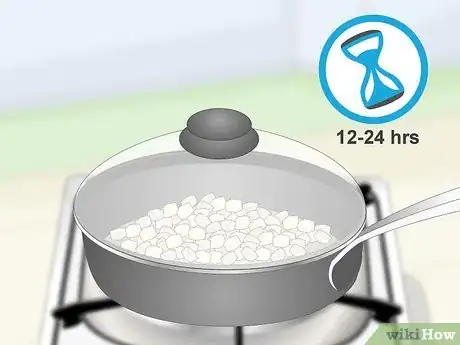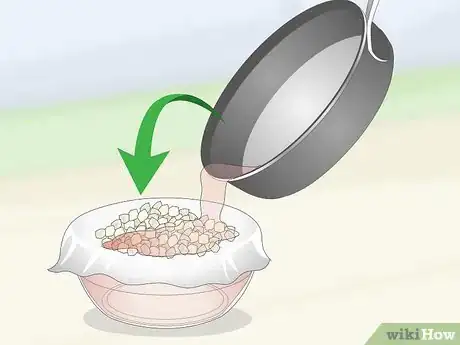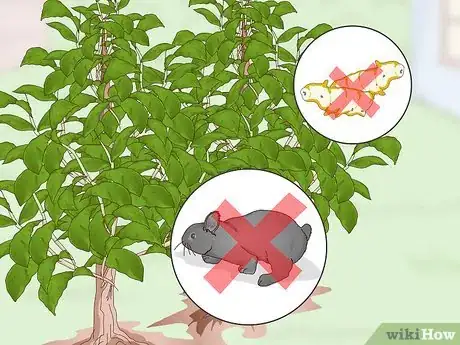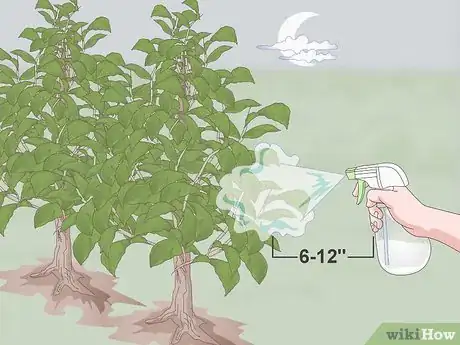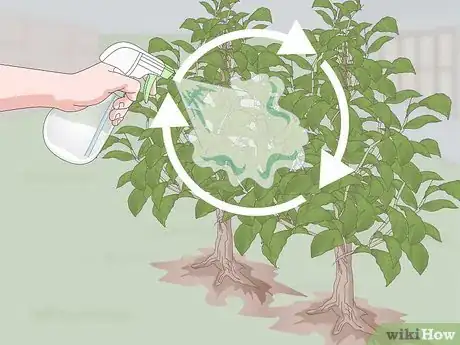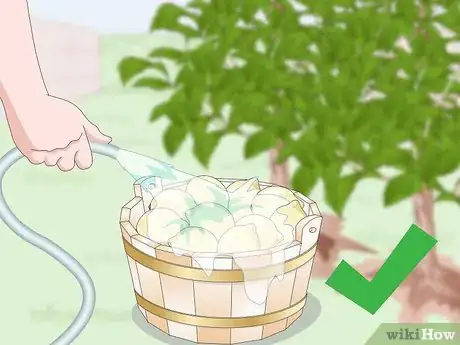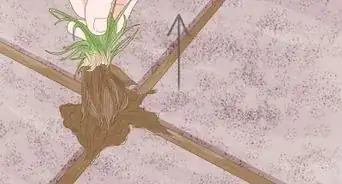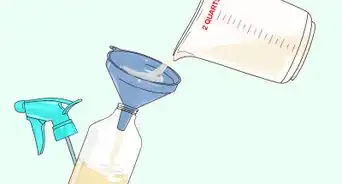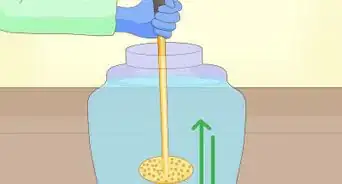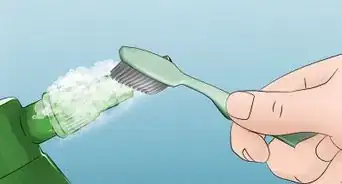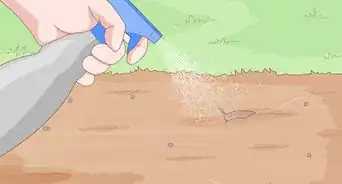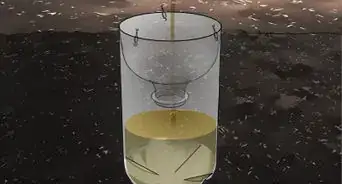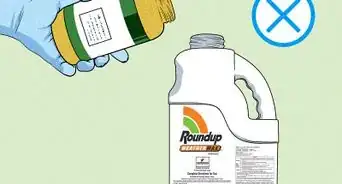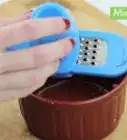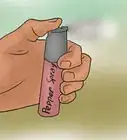This article was co-authored by Maggie Moran. Maggie Moran is a Professional Gardener in Pennsylvania.
There are 8 references cited in this article, which can be found at the bottom of the page.
This article has been viewed 280,836 times.
Garlic isn't just a delicious and nutritious aromatic to use in the kitchen, and you can also use it in the garden. Because garlic contains sulfur compounds, it acts as a natural repellent for many insects. This means you can turn garlic into a cheap and safe pesticide. You can make a basic garlic spray to control aphids, slugs, and other insects, or you can make an onion, chili, and garlic spray that will help keep away ladybugs, caterpillars, deer, and other insects and animals as well.
Ingredients
- 1 head garlic
- 4 cups (940 ml) water
- 2 tablespoons (30 ml) liquid soap
- 4 cups (940 ml) water
- 1 head garlic, peeled
- 1 small onion, peeled
- 1 teaspoon (2 g) powdered cayenne pepper
- 1 tablespoon (15 ml) liquid dish soap
Steps
Making a Basic Garlic Spray
-
1Peel the garlic. Use your fingers to peel off the outer layer of skin from the head of garlic. Break up the individual cloves and transfer them to a large metal mixing bowl. Cover the bowl with another metal bowl of the same size. Hold the two bowls together and shake them vigorously for 10 seconds. Remove the top bowl and pick out the peeled garlic cloves.[1]
- You can also use a large mason jar with a lid if you don’t have two metal mixing bowls of the same size.
-
2Process the garlic in a blender. Transfer the peeled garlic cloves to a blender. Add 1 cup (235 ml) of the water and secure the lid on the blender. Puree the mixture until the garlic is finely chopped, about a minute.[2]
- If you don’t have a blender, you can use a food processor or immersion blender. Otherwise, chop or mince the garlic with a knife or garlic press and stir it together with the water.
Advertisement -
3Add the remaining water and soap to the blender. Puree the mixture for an additional minute or so, until the garlic has been liquified. The soap will help the mixture stick to the foliage in the garden, but it also acts as a pesticide in its own right.
- You can use any liquid soap you like, such as dish or castile soap.[3]
-
4Steep the mixture overnight. Transfer the pureed mixture to a clean mason jar and screw on the lid. Leave the mixture on the counter for at least 12 hours, and up to 24. The longer the mixture steeps, the more time the garlic will have to infuse the water with pungent sulfur compounds.[4]
-
5Strain the mixture. Line a fine-mesh strainer with cheesecloth and position the strainer over a bowl. Pour the mixture into the strainer to remove the chunks of garlic. Give the cheesecloth a gentle squeeze to remove as much of the liquid as possible.
- Straining the mixture will prevent the garlic from clogging the nozzle on your spray bottle.[5]
-
6Transfer the mixture to a spray bottle. Insert a funnel into the mouth of a clean spray bottle. Pour the garlic liquid into the spray bottle.[6] Remove the funnel and screw on the lid. Use as necessary to control pests and fungi in the garden.
- Store the mixture in the refrigerator and use within a week.
Making a Garlic, Onion, and Chili Spray
-
1Chop the garlic and onion. Use a knife or garlic press to mince the garlic. Move the onion to a cutting board and use a sharp knife to dice it finely into small cubes. Transfer the minced onion and garlic to a large saucepan.[7]
-
2Add the water and cayenne to the saucepan. You can use red pepper flakes in place of the cayenne, or a fresh hot pepper if you like, such as a jalapeño or habanero. When using a fresh pepper, mince it finely before adding it to the pot.
- For additional pesticide properties, add three to four fresh or dried mint leaves to the saucepan as well. Mint works as a repellent for ladybugs and other beetles.[8]
-
3Boil the mixture. Put the lid on the saucepan. Bring the water to a boil over medium-high heat. When the water is boiling, lower the heat to medium and continue simmering for an additional 15 minutes. Then, remove the pan from the heat and set it aside.[9]
-
4Leave the mixture to steep. With the lid on, allow the garlic, onion, and cayenne mixture to cool for at least 12 hours, and up to 24. This will give the sulfur and oils from the vegetables time to infuse into the water.[10]
-
5Strain the mixture. Pour the cooled mixture into a cheesecloth-lined strainer that’s positioned over a bowl. This will remove the solid pieces of garlic, onion, and pepper, and leave nothing but a sprayable liquid behind.[11]
-
6Transfer the mixture to a spray bottle. Use a funnel to prevent spills when you pour the mixture from the bowl into the clean spray bottle. Use as necessary in the garden to eliminate pests and animals that are feasting on your leaves.
- In the refrigerator, this mixture will last for about a week.[12]
Using the Spray
-
1Spray plants to deter pests and powdery mildew. The garlic in these sprays has antibacterial, antifungal, and insect-repellent properties. When you spray foliage in the garden with a garlic spray, it will eliminate a number of common garden problems. Garlic can:[13]
- Repel aphids, slugs, caterpillars, ladybugs, and other insects
- Deter deer, rabbits, and other animals that could eat your plants
- Kill powdery mildew[14] of water and 1 teaspoon (4.9 mL) of fresh lemon juice and add it to the oil. Once this is done, you strain the liquid through a filter and add this to a spray bottle.”|}}
-
2Apply spray to the foliage in the evening. Hold the spray bottle 6 to 12 inches (15 to 30 cm) from the plant you want to treat. Spritz the liquid to cover the tops and bottoms of the leaves with an even coating of spray. Many bugs like to hide on the underside of leaves, and powdery mildew can grow there too.[15]
- It’s best to apply the spray in evening, when the sun can't burn the leaves, and when insects tend to be more active.
-
3Reapply the spray every few days and after rain. For the best results, apply a coating of spray every 3 to 5 days (or possibly even daily) until the insects are under control, and once a week thereafter. Reapply after rainfall as well, because the precipitation will wash the spray from the foliage.[16]
-
4Wash produce thoroughly before eating. The garlic spray is non-toxic, but you should wash fruits and vegetables well after harvesting to remove residue. Not only can the garlic spray be hot and spicy, but the dish soap will be unpleasant and bitter.
Expert Q&A
Did you know you can get expert answers for this article?
Unlock expert answers by supporting wikiHow
-
QuestionIs garlic good for losing weight?
 Maggie MoranMaggie Moran is a Professional Gardener in Pennsylvania.
Maggie MoranMaggie Moran is a Professional Gardener in Pennsylvania.
Home & Garden Specialist
-
QuestionHow do I make a garlic spray?
 Maggie MoranMaggie Moran is a Professional Gardener in Pennsylvania.
Maggie MoranMaggie Moran is a Professional Gardener in Pennsylvania.
Home & Garden Specialist
-
QuestionWhat does garlic repel?
 Maggie MoranMaggie Moran is a Professional Gardener in Pennsylvania.
Maggie MoranMaggie Moran is a Professional Gardener in Pennsylvania.
Home & Garden Specialist
Warnings
- Be very careful not to get this spray in your eyes, nose, or mouth, as it can burn, especially if you added hot pepper to the mixture.⧼thumbs_response⧽
References
- ↑ https://www.thekitchn.com/smart-tip-peel-an-entire-head-of-garlic-in-10-seconds-157145
- ↑ http://www.epicgardening.com/how-to-make-garlic-spray/
- ↑ http://www.care2.com/greenliving/garlic-spray-garden-pests.html
- ↑ https://oldworldgardenfarms.com/2013/07/16/battle-pests-garlic-spray/
- ↑ http://www.geniuskitchen.com/recipe/gardeners-friend-garlic-spray-68652
- ↑ http://www.epicgardening.com/how-to-make-garlic-spray/
- ↑ https://www.rodalesorganiclife.com/home/diy-insect-spray-covers-most-pests
- ↑ http://anoregoncottage.com/homemade-garlic-mint-garden-insect-spray-really-works/
- ↑ https://oldworldgardenfarms.com/2013/07/16/battle-pests-garlic-spray/
- ↑ https://oldworldgardenfarms.com/2013/07/16/battle-pests-garlic-spray/
- ↑ http://anoregoncottage.com/homemade-garlic-mint-garden-insect-spray-really-works/2/
- ↑ https://www.rodalesorganiclife.com/home/diy-insect-spray-covers-most-pests
- ↑ https://oldworldgardenfarms.com/2013/07/16/battle-pests-garlic-spray/
- ↑ http://www.epicgardening.com/how-to-make-garlic-spray/
- ↑ http://www.epicgardening.com/how-to-make-garlic-spray/
- ↑ https://oldworldgardenfarms.com/2013/07/16/battle-pests-garlic-spray/
About This Article
To make a basic garlic spray to control pests and fungi in your garden, start by peeling a head of garlic. Next, pour the cloves into a blender or food processor along with 1 cup of water. Secure the lid and puree the mixture until the garlic is finely chopped, which should take about a minute. Add 3 more cups of water and 2 tablespoons of liquid soap to the mixture, then puree it for 1 more minute in the blender. Once it's blended, pour the mixture into a clean mason jar and leave it on the counter to steep for 12-24 hours. After that, strain the mixture through a fine-mesh strainer with cheesecloth and transfer the resulting liquid into a spray bottle. For more advice from our Gardening co-author, including how to make a garlic, onion, and chili spray, read on!
